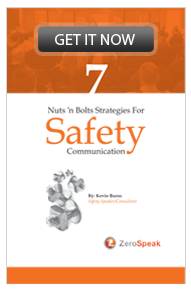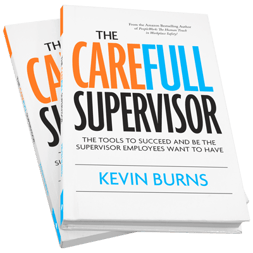To keep safety top-of-mind, appeal to employees like television networks do during the Olympics.

The Olympics are on. I find it difficult to get any work done during the Olympics because I’m an Olympics junkie. Once I’ve cleared off my desk for the day, it’s to the big chair, remote in hands to jump back and forth between the almost dozen channels that feature Olympic coverage.
I find myself enjoying some sports I don’t normally pay much attention to like biathlon - although 2-man luge is still a little weird for me.
Team sports that don’t feature my home country, Canada, are a tough draw for me. Click. Flip the channel. Break for commercials? Click. Flip the channel. Replay the same events that I’ve seen already three times? Click. Flip the channel. Video feed goes all pixelated? Click. Flip the channel. The remote control gets a heavy workout over two weeks.
Selling Safety To Employees
TV viewers are discerning. They will tune out messages they find boring and that don’t keep their interest piqued. And this is the lesson that the Olympics taught me about trying to sell safety to employees.
Employees are exposed to at least one safety message per month - the safety meeting. Twenty-nine days go by until they are exposed to another safety meeting. There’s a chance that they will be exposed to other safety messages during that twenty-nine days but like sitting in an armchair watching sports, they can flip to whatever channel seems most appealing. Sorry, but your safety message isn’t holding their attention, and it’s not broadcasting often enough to create any sort of affinity.
If you want to keep safety at the top of the minds of your people, you’ve got to look at appealing to them in the same way that television networks appeal to viewers. They work hard to craft the messaging, get the timing of that message right and to make it relevant and appropriate to those who they are trying to attract as viewers.
Here are the four cornerstones of marketing your safety message to create safety buy-in:
1Make it frequent: frequency of message creates familiarity. There’s no need for a formal safety meeting every day, but you must create some sort exposure to safety at least every day. You could celebrate your milestones like another 500 hours incident-free yesterday and add it to the total. It could be recognizing an employee for outstanding safety contribution. Whatever it is, tie it to your safety campaign or safety mission statement. Repeat, repeat, repeat. Every day.
2Make it personal: when you talk in generalizations, it is tough for anyone to internalize the information. No one can own a generality. You have got to get personal. You are, after all, talking to specific people in an attempt to get specific people to specifically own safety for themselves. What do you want them to do with the information? Who specifically is the message aimed at. Pick a few members of your staff, identify their motivators, their resistance and their mental barriers and design a safety message that speaks directly to them.
3Make it engaging: PowerPoint slides are boring. Generic posters are boring. Anonymous gruesome photos from the Internet are boring - not to mention illegal (copyrighted). Stop trying to appeal to your people’s brains. If employees are making wrong choices on the job site, they’re really not using their brains. So stop trying to appeal to that thing they’re not using. You’ve got to make safety fun and enjoyable. Rules, regulations and punishments are not fun and enjoyable. Try taking some recurring issues on your work sites and ask your people to solve the very issues they are creating. You’ll be surprised how well people engage in solving their own problems.
4Make it relevant: showing a video to your people about someone who was injured on the job in a different industry is not relevant. If you are going to show those kinds of videos to your staff, you are engaging in making the conversation all about injury - not safety. Let’s keep talking about safety. In fact, I would hazard a guess (safety pun intended) that 99.5% of the time, your people are safe and injury-free, so why would you engage in making injury a big part of your safety meeting? It’s a safety meeting. Make it about safety - not injury.
If you want to bring a positive message of safety accountability and responsibility, then let’s talk about how my program can offer that. Go positive in safety. Feel free to download my free e-book,
7 Nuts 'n Bolts Strategies For Safety Communication.



